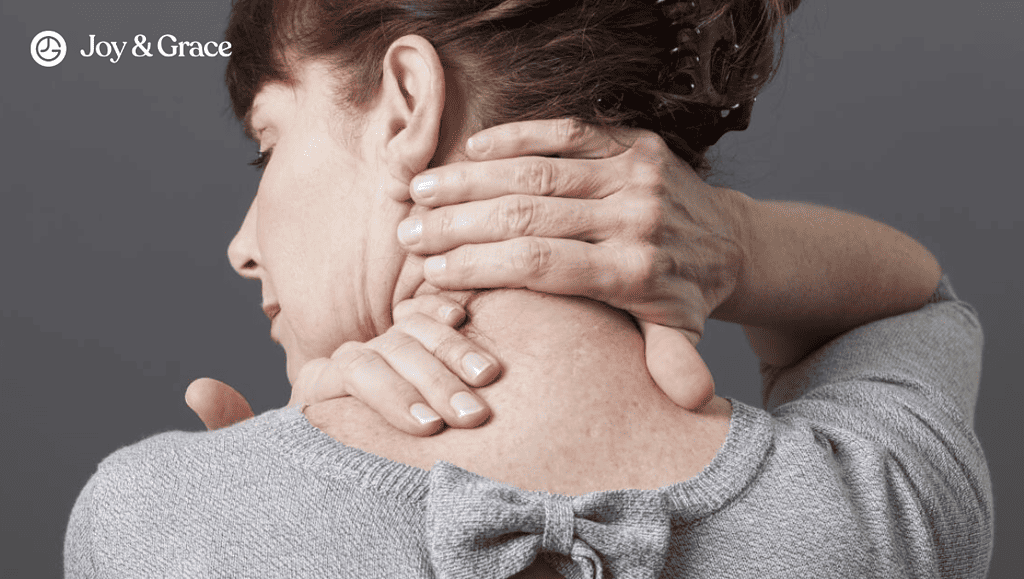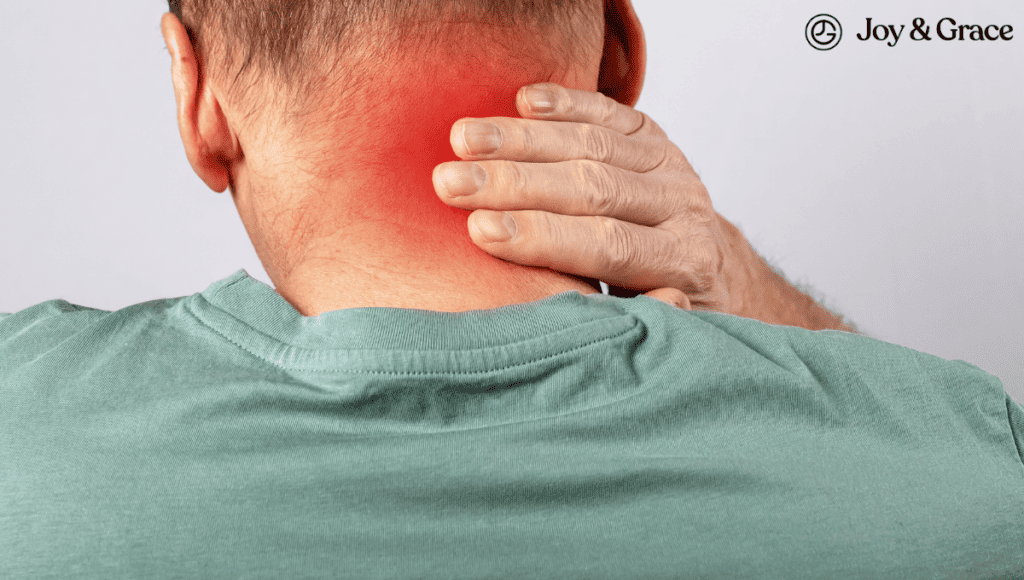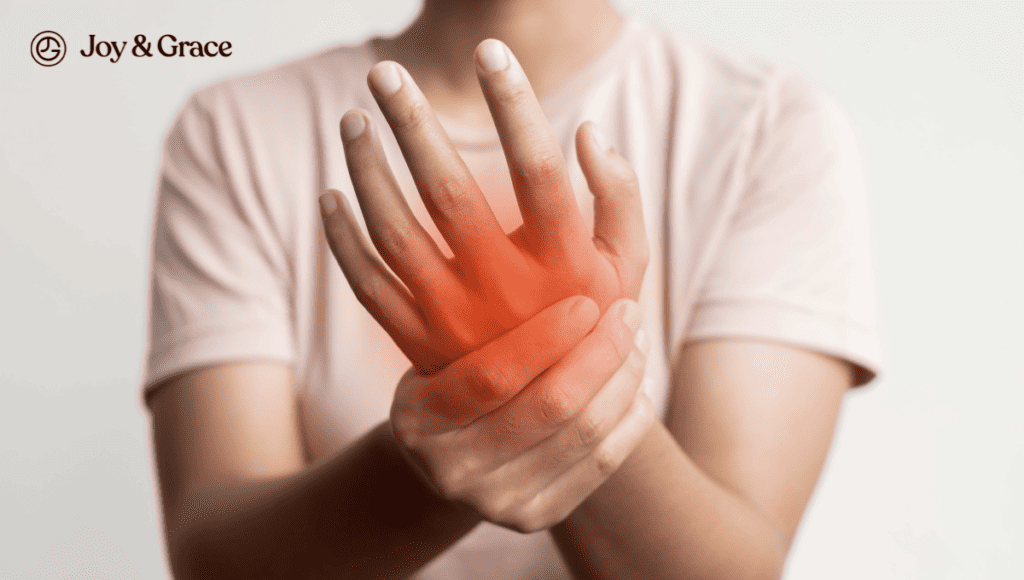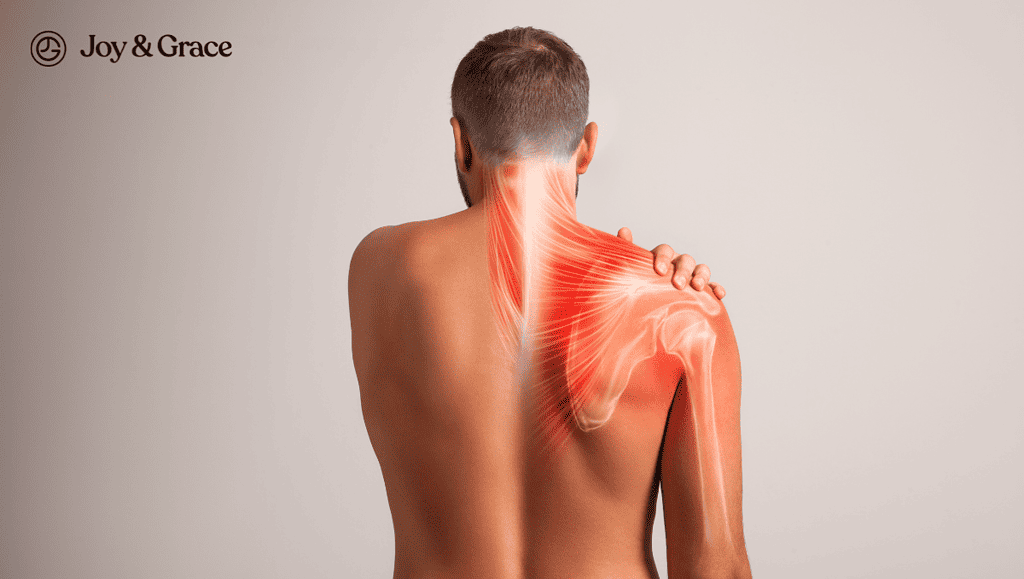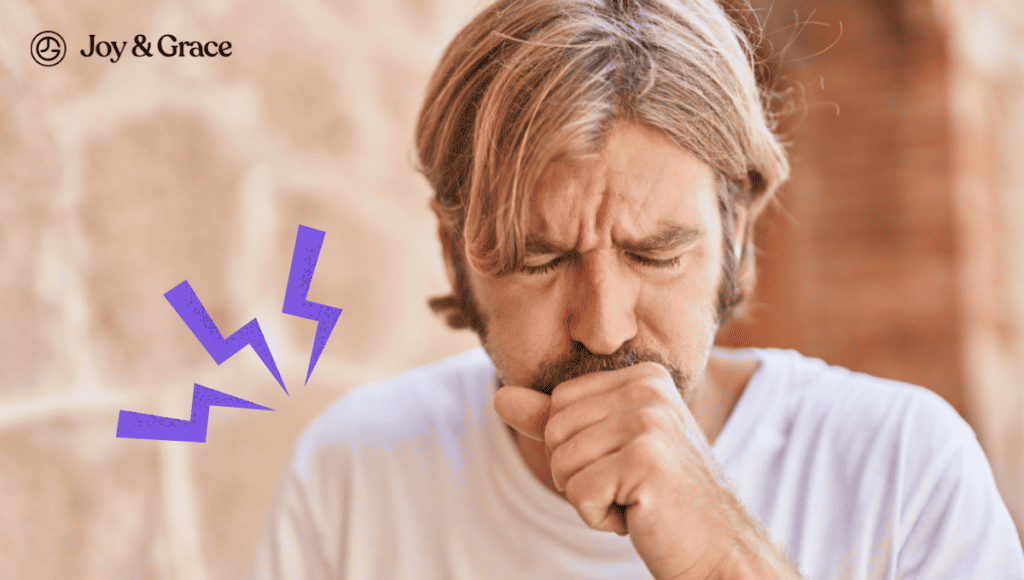Neck pain is a common condition caused by several factors, like poor posture or muscle strain. On the other hand, a stroke occurs when blood flow to the brain is disrupted. Though they seem unrelated, neck pain can be a warning sign of an impending stroke.
Buckle up, folks! We're about to explore the connection between neck pain and stroke. We'll uncover how a stroke can affect your neck and the red flags you should keep an eye out for. So grab a snack, settle in, and let's get started!
Is Neck Pain A Stroke Symptom?
There are no studies reporting neck pain as a stroke symptom.
Neck pain and stroke are two different medical conditions that are usually not related to each other.
Various things, like muscle strains, poor posture, or underlying medical conditions, can cause neck pain. A stroke happens when the blood flow to the brain is disrupted, usually due to a blood clot or bleeding in the brain.
Still, although neck pain is typically not a direct symptom of a stroke, in certain cases, it may be a warning sign of an impending stroke. However, it's important first to understand whether a stroke can actually cause neck pain.
Can A Stroke Start In My Neck?
A stroke usually affects the brain. But it's worth noting that the clot that causes a stroke can sometimes originate from the blood vessels in the neck.
These blood vessels are called the carotid arteries and are found on both sides of your neck. These blood vessels are very important since they supply blood to your head and brain.
When the carotid arteries become narrow or blocked due to a build-up of fat (plaque), it’s called carotid artery disease. When this happens, blood flow to the brain is reduced, which can increase the risk of a stroke. If a piece of plaque or a blood clot breaks loose from the carotid artery and travels to the brain, it can block a blood vessel in the brain, causing a stroke.
Carotid artery disease is one of the leading causes of stroke, causing at least one-third of all strokes. However, it’s important to note that neck pain is usually not a symptom of carotid artery disease.
Another way a stroke can start from the neck is through cervicocerebral artery dissection. Cervicocerebral artery dissection (CCAD) is a condition where a tear occurs in the wall of one of the arteries that supply blood to the brain. The arteries most commonly affected are the carotid or vertebral arteries.
This can lead to a stroke if the tear results in a blood clot forming in the artery or if the dissection causes narrowing of the artery, reducing blood flow to the brain. Neck pain alone could also be a symptom of the beginning of a cervical dissection.
This is what happened to model and actress Claudia Mason. Claudia Mason suffered a cervical dissection, a tear in her vertebral artery, after a dance class, during which she threw her head around.
Mason brushed off her neck pain after her dance class on a Tuesday night. Since it was a routine dance class, her body was sore all over. However, this eventually resulted in an ischemic stroke when a blood clot became dislodged, blocking blood flow to the brain.
Does My Neck Hurt When My Carotid Artery Is Blocked?

As we mentioned earlier, neck pain is not a typical symptom of carotid artery disease. In fact, many people with this condition may have no symptoms unless they experience a TIA (transient ischemic attack) or a stroke. Keep an eye out for TIA because we'll be diving into that topic a little later on!
But remember cervicocerebral artery dissection? Well, when it involves the carotid artery, it is referred to as carotid artery dissection, and it can cause severe neck pain.
Carotid artery dissection is a condition that occurs when there is a tear or rupture in the inner lining of the carotid artery. The tear can cause a separation of the layers of the artery wall and create a false channel or "dissection" where blood can flow.
This can lead to the accumulation of blood (inside this false channel), which can form a blood clot. The clot can block blood flow to the brain or travel to smaller blood vessels and cause a stroke.
The symptoms of carotid artery dissection can include:
- Sudden and severe headaches,
- Neck pain, and
- Pain behind the eye.
A 2022 study aimed to understand more about the pain experienced by people with spontaneous cervical artery dissection. The study found that among 279 subjects with spontaneous cervical artery dissection, 80.6% experienced head or neck pain.
Of those, the most common type of pain was a pulling sensation (49.1%), which often extended to the neck area (66.5%). Interestingly, if a patient had a history of headaches, the pain was often different in quality (75.4%). Typically, the pain went away within 13.5 days, but 25.6% of patients experienced recurring headaches upon follow-up.
What Is A Neck Stroke?
A "neck stroke" or “stroke in the neck” is not a medical term commonly used to describe any specific medical condition. However, if someone uses the term "neck stroke" to refer to a medical condition, they could be referring to a spinal cord infarction. Specifically, cervical spine ischemic stroke.
Cervical spine ischemic stroke is a type of stroke that affects the cervical (neck) region of the spinal cord. It can be caused by a variety of factors, such as:
- A blood clot
- Atherosclerosis
- A sudden drop in blood pressure.
The symptoms of cervical spine ischemic stroke can vary depending on the location and extent of the damage. Still, they often include:
- Sudden and severe neck pain
- Weakness or paralysis in the arms or legs
- Loss of sensation
- Difficulty with bowel or bladder control.
However, cervical spine ischemic strokes are relatively rare. In fact, they only account for 1% of all strokes.
So while it might seem like a stroke of genius to come up with a catchy name like "neck stroke," we may end up confusing the professionals who might be handling our case. After all, carotid artery disease and cervicocerebral artery dissection are also “neck strokes” in a sense.
It's best to stick to accurate medical terminology. When it comes to your health, there's no room for puns and wordplay!
Can Stiff Neck Lead To Stroke?
Although no evidence suggests that a stiff neck can cause a stroke, some studies suggest that certain treatments for a stiff neck do.
Cervical spinal manipulation, or "neck cracking," may increase the risk of stroke.
How Common Is It To Have A Stroke From Cracking My Neck?

People usually go to chiropractors to fix their stiff necks, or sometimes they crack their necks themselves. However, this may be dangerous for people who are at risk for artery dissections.
In one study we found, a 32-year-old woman suffered a fatal stroke after her vertebral artery got damaged following chiropractic manipulation. According to the study, this rare event can happen in about 1 in 48 chiropractors.
This may also have been the case for Katie May, a well-known model dubbed the "Queen of Snapchat." She tragically passed away in 2016 at the young age of 34 due to a catastrophic stroke.
As per reports, Katie May's friends revealed that she had suffered a neck injury while posing for a photoshoot about two weeks before her stroke. She then went to a chiropractor twice for treatment. The day after her second visit, May tweeted about her persistent neck pain and informed a fan that she was planning to return to the chiropractor.
According to her friend, May’s health began to decline on Monday afternoon, shortly after her second visit to the chiropractor. By the time they were on their way to the hospital, May was in such bad shape that she could hardly move and was vomiting in the waiting room. Despite initially recovering from one stroke, May, unfortunately, experienced another one overnight.
Although there is no direct cause-and-effect relationship between chiropractic care and strokes, a 2014 study by the American Heart Association and the American Stroke Association found a connection between chiropractic manipulation of the neck and arterial tears that may lead to stroke.
However, some studies refute this claim. In another study done in 2017, researchers compared the people who had strokes to those who didn't and looked at their medical history. Overall, they did not find evidence suggesting chiropractic care increases the risk of carotid artery stroke.
The study suggested that people who had strokes and had previously visited a chiropractor or a primary care physician (PCP) may have done so because they were already experiencing early stroke symptoms. In other words, the visits to the chiropractor or PCP were not necessarily the cause of the stroke. But rather, the stroke was already in progress, and the patients sought care for their symptoms.
What Causes Neck Pain After A Stroke?
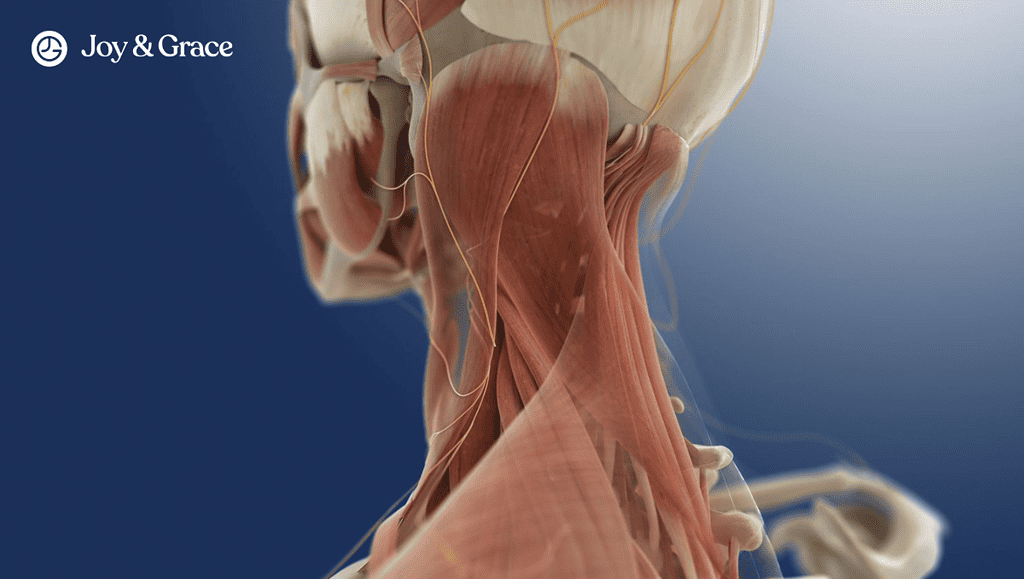
One way a stroke can cause neck pain is through muscle spasticity. Muscle spasticity is a common complication that can occur after a stroke. It is a condition where muscles become stiff, tight, and difficult to move. This makes it challenging for stroke survivors to perform everyday tasks such as walking or reaching for objects (the shoulders are also commonly affected).
Muscle spasticity can be caused by damage to the part of the brain that controls movement, resulting in an imbalance of signals to the muscles. In stroke survivors, muscle spasticity is typically seen in the limbs on one side of the body, opposite to the side of the brain where the stroke occurred.
It is called cervical dystonia or spasmodic torticollis when it happens in the neck.
How Does A Stroke Affect The Neck?
Apart from what we just described, very few studies talk about how a stroke concretely affects the neck.
- In one study in 2011 about the effects of stroke on the neck, researchers wanted to find out how a certain muscle in the neck, called the sternocleidomastoid, is affected by a stroke. They tested the strength of this muscle in 124 stroke patients while they moved their heads in different directions.
They found that weakness in the muscle only happened when the stroke also caused weakness in the arm or leg on the same side of the body. The weakness was always less severe than the weakness in the arm or leg. This was rare and only occurred in 16.9% of patients. They also found that the muscle that tilts the head was unaffected by the stroke because other muscles could still do that job.
A stroke may also cause dropped head syndrome due to cervical dystonia. Cervical dystonia is a condition where a person's neck muscles contract involuntarily. This causes your head to twist or turn in an abnormal position. This can cause discomfort, pain, and difficulty moving the head.
However, only a few pieces of literature talk about the relationship between stroke and these two conditions. In fact, we only found two case reports during our research:
- The first one talks about a 64-year-old Japanese man who experienced weakness in his left hand and leg, which went away within 24 hours. This was diagnosed as a mini-stroke. A week later, he experienced mild weakness in his left hand again and difficulty keeping his head up. An examination showed weakness in his left arm and hand, but his neck muscles were not weak.
Upon further testing, he was diagnosed with an atherothrombotic infarction. This type of stroke is caused by a blood clot that forms in a blood vessel in the brain. Tests also showed that his trapezius muscles were tense when resting. Meanwhile, his sternocleidomastoid muscle activity gradually increased when he lifted his head.
- In the second case, an 86-year-old woman in Japan had a stroke in a part of her brain called the medulla. This caused her to suddenly lose feeling in one side of her body and have trouble speaking. A few days later, she felt tightness in her neck, and her body started twisting towards the other side.
What Are The Warning Signs Of A Stroke?

A stroke is a serious medical condition that occurs when blood flow to the brain is interrupted, causing brain cells to die. It's important to know the warning signs of a stroke so that immediate action can be taken. The warning signs of stroke can be best described with the acronym F.A.S.T:
- F - Face drooping
One side of the face may droop or become numb. Ask the person to smile to check for unevenness.
- A - Arm weakness
One arm may feel weak or numb, or the person may have difficulty lifting both arms evenly.
- S - Speech difficulty
The person may have trouble speaking, slurred speech, or difficulty understanding speech.
- T - Time to call for emergency medical help
If any of these symptoms are present, it's essential to call for medical emergency treatment immediately, even if they go away.
Are There Warning Signs Days Before A Stroke?
There can be warning signs that show up days before a stroke. These warning signs are called transient ischemic attacks (TIAs) or "mini-strokes."
Similar to a stroke, TIAs happen when the blood flow to the brain is briefly interrupted.
TIAs also have similar symptoms to a stroke, but they only last for a short period of time, usually just a few minutes to a few hours. Symptoms of a TIA can include:
- Sudden weakness or numbness in the face, arm, or leg, especially on one side of the body
- Sudden confusion, trouble speaking or understanding speech
- Sudden trouble seeing in one or both eyes
- Sudden dizziness, loss of balance or coordination, or trouble walking
- Sudden, severe headache with no known cause
If you experience any of these symptoms, even if they go away quickly, it's important to get medical care immediately. Early treatment can help prevent a full stroke from happening.
It's important to know that not all strokes are preceded by a TIA, and not all TIAs lead to a stroke. But if you're at risk for stroke due to factors such as:
- High blood pressure
- Smoking
- Diabetes
- A history of heart disease or stroke
It's important to be aware of the warning signs and take steps to lower your risk.
Is There Pain In The Neck Before A Stroke?
As we mentioned earlier, neck pain can be a symptom of cervicocerebral artery dissection (CCAD), which can lead to a stroke if left untreated. CCAD occurs when there is a tear in the inner lining of the artery wall, which can cause blood to flow into the arterial wall and create a blood clot. The clot can then block blood flow to the brain, resulting in a stroke.
The exact cause of CCAD is unclear, but several risk factors can increase your likelihood of developing the condition. Notice how some of these risk factors are the same risk factors that increase the chances of a stroke. These include:
- Trauma to the neck or head
- Connective tissue disorders
- High blood pressure
- Smoking
- Hypercholesterolemia (high cholesterol)
- Family history of CCAD or stroke
- Certain genetic conditions
It’s also worth mentioning that some of these risk factors can also cause neck pain. We have great articles on the relationship between smoking and neck pain, as well as traumatic neck injuries, so be sure to check them out!
Takeaway
Neck pain alone is usually not a symptom of a stroke but can be a warning sign of an impending stroke. This is especially true when you have factors that increase your chances of having a stroke.
Carotid artery disease and cervicovertebral artery dissections are two such conditions that increase the risk of a stroke. Cervicovertebral artery dissections typically present with severe neck pain. A stroke may possibly follow this neck pain.
It is crucial to seek immediate medical attention if you experience any warning signs of a stroke. Remember, time is of the essence in treating a stroke. Early intervention can help minimize the damage caused by a stroke and improve the chances of recovery.
Looking to add some Joy & Grace to your life? Subscribe to our newsletter for the latest articles on pain, pain relief, and overall wellness. From quick tips to in-depth research, our newsletter is your one-stop shop for all things health-related. Don't miss out on the opportunity to live your best life pain-free!
